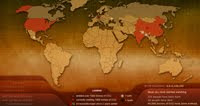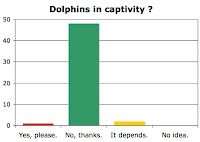
"Protecting even small patches of water can provide conservation benefits, as long as we choose the spots wisely," said Erin Ashe, author of a recent publication on the behaviour of killer whales (in British Columbia and Washington State) and marine protected areas.
Ashe and colleagues suggested that even small protected areas, identified through feeding behaviour, can benefit highly mobile marine predators such as killer whales. They indicated this after mapping locations where killer whales were observed feeding, socializing and resting, and identifying a small area in which whales were almost three times as likely to be feeding as they were in the rest of the region.
Protecting this little area could be crucial for two reasons. First, Chinook salmon, the favourite prey of this cetacean population, has declined in the region. Second killer whales are more disturbed by boat traffic when engaged in feeding activities than when they are travelling. Researchers think that management strategies to protect feeding hotspots should give greater conservation benefits than a generic habitat protection.
SB
---
Ashe E., Noren D.P., Williams R. 2009. Animal behaviour and protected areas: habitat conservation for an endangered killer whale population. Animal Conservation. DOI:10.1111/j.1469-1795.2009.00321.x
For more information:
http://www.sciencedaily.com/releases/2009/12/091216203438.htm









































